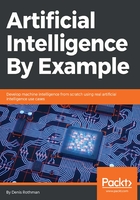
The law of large numbers – LLN
In probability, the law of large numbers states that when dealing with very large volumes of data, significant samples can be effective enough to represent the whole set of data. We are all familiar with polling, for example, a population on all sorts of subjects.
This principle, like all principles, has its merits and limits. But whatever its limitations, this law applies to everyday machine learning algorithms.
In machine learning, sampling resembles polling. The right, smaller number of inpiduals makes up efficient datasets.
In machine learning, the word "mini-batch" replaces a group of people in the polling system.
Sampling mini-batches and averaging them can prove as efficient as calculating the whole dataset as long as a scientific method is applied:
- Training with mini-batches or subsets of data
- Using an estimator in one form or another to measure the progression of the training session until a goal has been reached
You may be surprised to see "until a goal has been reached" and not "the optimal solution."
The optimal solution may not represent the best solution. All the features and all the parameters are often not expressed. This makes being too precise useless.
In this case, the marketing manager wants to know where the centroids (geometric center) of each cluster (region of locations) have been computed for his marketing campaign. The corporation may decide to open a new company at the location of each centroid and provide additional services through local spin-offs to increase their market penetration.
Taking that into account, a centroid does not need to be extremely precise. Finding the nearest large city within a reasonable distance will prove good enough.
The LLN explains why random functions are widely used in machine learning and deep learning.